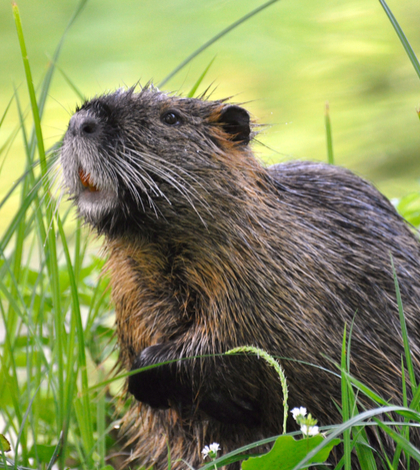Invasive nutria, South American rodents originally imported and farmed in California for the fur trade, have become California’s “triple threat.” They are characterized as a destroyer of critical wetlands needed by native wildlife, a top-rated agricultural pest and a public safety risk as their destructive burrowing jeopardizes the state’s water delivery and flood control infrastructure. A formal and aggressive effort to eradicate from California’s Central Valley last year saw the capture of 410 nutria — 330 from Merced County, 65 from San Joaquin County, 12 from Stanislaus County, two from Mariposa County and one from Fresno County.
An Incident Command System was initiated in 2018 when the California Department of Fish and Wildlife (CDFW) partnered with the U.S. Department of Agriculture and the California Department of Food and Agriculture to survey and eradicate nutria from the state. More than $3 million in state and federal grants support the effort to eradicate the rodents with funding nutria eradication the three-year program including: $1.2 million from the Sacramento-San Joaquin Delta Conservancy; $600,000 from California’s Wildlife Conservation Board; and, $1.25 million from the U.S. Fish and Wildlife Service’s State Wildlife Grant Program.
Of the 65 nutria captured in San Joaquin County, 64 were found within Walthall Slough near Manteca. Survey crews have not detected nutria elsewhere in the Sacramento-San Joaquin Delta. Eradication efforts have prioritized the one known nutria population in the Sacramento-San Joaquin Delta in order to limit their spread and impact on California’s most important water resource and the heart of the state’s water delivery and infrastructure.
CDFW and its partners have also set up trail cameras in suitable nutria habitat to monitor for their presence and deploy traps to catch the rodents once their presence has been confirmed. The project has set up 487 camera stations over the past year, conducted more than 1,600 camera checks and deployed 995 trap sets for a total of 12,930 trap nights. San Joaquin Valley farmers have donated five tons of sweet potatoes to use as bait to trap nutria.
CDFW has identified approximately 1.8 million acres of habitat suitable for the semi-aquatic nutria in the state’s central regions who are never far from a water source. CDFW so far has assessed more than 300,000 acres in three counties: Merced, Stanislaus and San Joaquin. In addition to these three counties and the two other counties where nutria have been captured, the rodents have also been confirmed in Tuolumne County.
As a top-rated agricultural pest, nutria threaten California’s nearly $50 billion agricultural industry and the trickle-down effects if nutria continue to multiple in California could be significant. The eradication efforts in the state have broad support from the state’s agricultural community.
CDFW’s Invasive Species “hotline” and corresponding e-mail account has received 357 nutria reports from the public over the past year. Although most of these have turned out to be false reports – either sightings of other wildlife mistaken for nutria or reports that lack enough information to confirm – public reporting will continue to be important in determining the full extent of the infestation. When possible, reports should be accompanied by photos and videos.
CDFW’s toll-free reporting hotline is: 866-440-9530. The e-mail address to report nutria sightings is: invasives@wildlife.ca.gov. CDFW’s nutria eradication webpage at: https://www.wildlife.ca.gov/Conservation/Invasives/Species/Nutria/Infestation will aid people in distinguishing nutria from other similar aquatic animals. Additionally, CDFW has partnered with the Delta Stewardship Council to produce a nutria identification pocket guide which is available at: http://deltacouncil.ca.gov/nutria-pocket-guide.
 California Water News Daily Your Source For Water News in California
California Water News Daily Your Source For Water News in California


